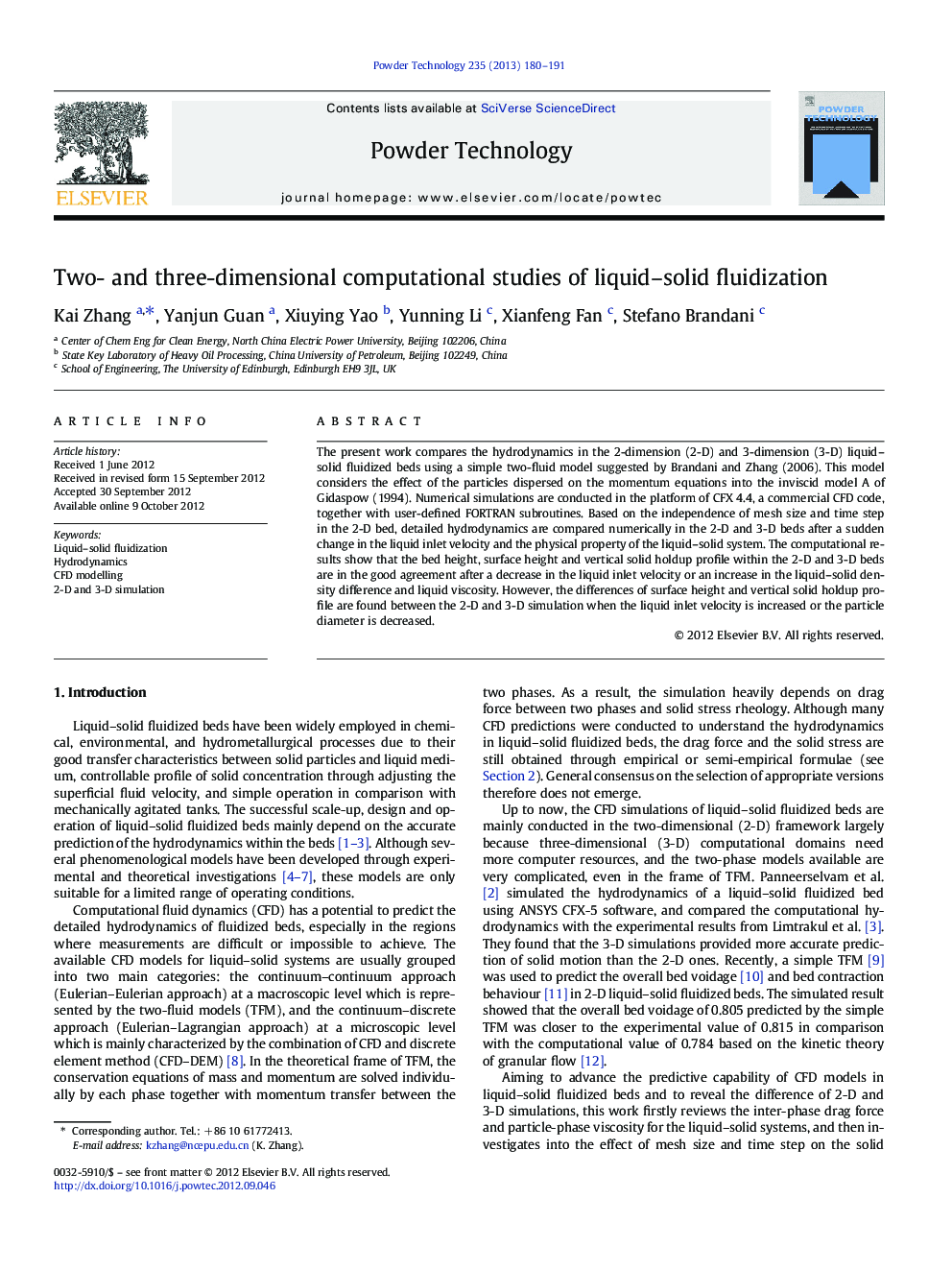| Article ID | Journal | Published Year | Pages | File Type |
|---|---|---|---|---|
| 236631 | Powder Technology | 2013 | 12 Pages |
The present work compares the hydrodynamics in the 2-dimension (2-D) and 3-dimension (3-D) liquid–solid fluidized beds using a simple two-fluid model suggested by Brandani and Zhang (2006). This model considers the effect of the particles dispersed on the momentum equations into the inviscid model A of Gidaspow (1994). Numerical simulations are conducted in the platform of CFX 4.4, a commercial CFD code, together with user-defined FORTRAN subroutines. Based on the independence of mesh size and time step in the 2-D bed, detailed hydrodynamics are compared numerically in the 2-D and 3-D beds after a sudden change in the liquid inlet velocity and the physical property of the liquid–solid system. The computational results show that the bed height, surface height and vertical solid holdup profile within the 2-D and 3-D beds are in the good agreement after a decrease in the liquid inlet velocity or an increase in the liquid–solid density difference and liquid viscosity. However, the differences of surface height and vertical solid holdup profile are found between the 2-D and 3-D simulation when the liquid inlet velocity is increased or the particle diameter is decreased.
Graphical abstractFigure optionsDownload full-size imageDownload as PowerPoint slideHighlights► A simple two-fluid model is used to predict liquid–solid fluidization. ► Independence of mesh size and time step is investigated in the 2-D bed. ► Results are compared in the 2-D and 3-D beds after operational condition is changed. ► Differences are found as increasing liquid velocity or decreasing particle diameter.
